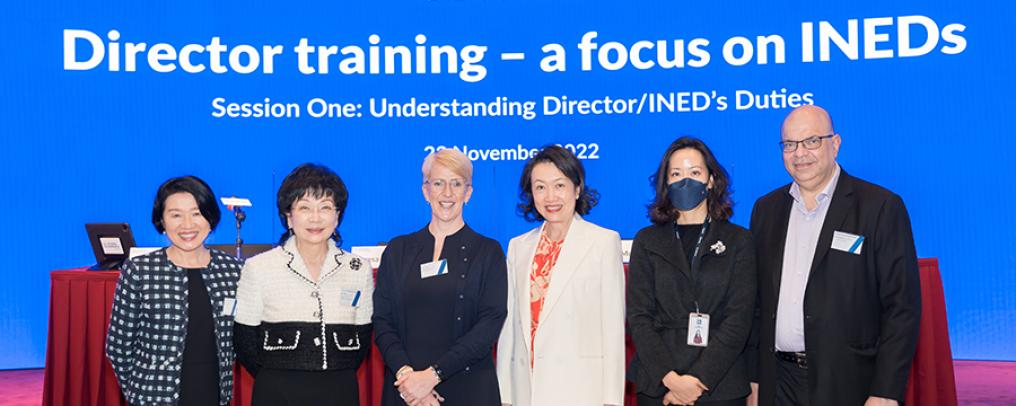Succession planning is a core part of good board governance. Neil Waters, Office Leader and Partner, Egon Zehnder Hong Kong, offers some tips on how to get it right.
Succession is a complex and tricky issue, but it is one that boards simply cannot ignore. It is inevitable that there will be turnover, therefore the sensible and responsible approach is to properly plan for it.
Company boards have always faced challenges, however the magnitude of global and local changes in recent years feels unprecedented. Ensuring the board has the right skills, experience and independence to deal with current and future uncertainty is essential.
The direction of travel is for more frequent board refreshment. According to a recent PwC report (Non-Executive Directorship in Hong Kong 2021 Review), the average tenure of non-executive directors (NEDS) and independent non-executive directors (INEDs) in Hong Kong reduced from 5.47 years in 2017 to 5.24 years in 2021.
Moreover, Hong Kong’s Corporate Governance Code and Listing Rules were revised in January 2022 to promote board independence and incentivise board refreshment and succession planning. Hong Kong listed boards need to be proactively thinking about what this all means for them.
Also, recent legislation by the US Securities and Exchange Commission, requiring US companies to use a universal proxy card, may make it more likely that current directors could become more vulnerable to replacement.
A McKinsey article (Investors Remind Business Leaders: Governance Matters, October 2020) points out that governance is increasingly top of mind for institutional investors. Quoting research by Activist Insight (www.activistinsight.com), the article states that around 70% of all activist-investor demands over the past decade have focused on governance and many have garnered support from proxy advisers. The research indicates that activist investors’ corporate governance concerns, while many and varied, tend to fall into two broad categories: structural or personnel-related. Those relating to personnel include requesting leadership changes such as the removal of senior executives or board members for failures of performance.
A key obligation for any board is to maintain control of the company through any period of transition. Boards (and companies) perform best when this is the case. Ideally, boards want to be in a position on any issue to consider the full suite of options, knowing whatever they choose will be supported by shareholders. So it is with succession planning. Ideally, people (internally and externally) should not notice the succession happening. The worst thing to do is to create a shock leading to negative news, which leads to uncertainty and can materially impact the company’s share price.
World class companies think about transition in multi-year timeframes. The revisions to Hong Kong’s Corporate Governance Code and Listing Rules in January 2022, among other things, require:
- any further appointment of INEDs that have served more than nine years should be subject to a separate resolution to be approved shareholders, and
- a new INED should be appointed if all INEDs on the board are long-serving INEDs (serving more than nine years).
There is a clear incentive for boards to have timely, open and honest conversations about succession planning. Within this, they should also consider chief executive officer (CEO) succession, which, although not subject to a timeframe in the same way as it is for INEDs, is a critical element of good governance. Having concurrent transitions of CEO and Chair, for example, can look troubling to investors.
Over and above the local regulator, global institutional shareholders are taking even more strident positions. Investors like BlackRock are very clear about their expectations, and it goes well beyond independence and tenure (see Our Approach to Engagement on Board Quality and Effectiveness, at: www.blackrock.com). As more Hong Kong companies want global capital they will be subject to these requirements, and succession and board quality will be high on the list of criteria for investment selection.
Guidance on board renewal
To help get started there are some important things to take into account.
- Consider the capabilities you currently have. What skills do current board members possess? How diverse is the board in terms of age, gender, nationality, etc? Are any board members overboarded?
- Consider how the company is changing and what capabilities you need to govern it in the future. This is also about other people in the organisation. You might have a great executive team, but if there is no potential CEO successor then you need to consider what type of leader you could bring in. Do you need industry experience? Could a great people leader come in from another industry? Alternatively, you might have three great internal candidates. What happens when you choose one and may lose the other two as a result of that decision? All of this creates instability for the people directly involved, as well as the wider company.
- Consider the knowns and the unknowns. With board members, you know when they are up for re-election and when their term may end. With CEOs you often do not. It is essential to closely monitor the individual, assess their capabilities and understand their motivations.
- The plan needs to be flexible. Having a detailed plan in place does not mean that things won’t change. When the environment shifts, you need to be aware of the unintended consequences of what might happen. Always be prepared that the plan might need to be accelerated.
- Consider how these processes should be governed. There is an inevitable desire for succession planning to be treated as top secret because you are talking about individual desires. However, you need to be thoughtful about it and this involves being open as far as necessary. It is best to build in the greatest amount of transparency that there can be. It is not satisfactory for only the Chair and the CEO to know what is planned.
Plan for evolution rather than revolution
Following the above tips should help to smooth the succession planning process, but it is still tricky.
The needs of the organisation and the needs of the incumbent person need to be carefully balanced. Regardless of whether it is the Chair, NEDs, INEDs or the CEO, there will be different preferences that need to be understood and carefully managed.
While you may have a seemingly bulletproof plan in place, emotions can get in the way – succession is very personal and elicits human responses. What could appear to be simple and under control one day, may become fraught with very little warning.
Succession is often seen as a one-way path. This means that opening the conversation at the right time can be a challenge. Wherever possible, knowledge about succession planning should be kept to those who need to know, but it can spread further. This can lead organisations to enter a period of hiatus or flux. In the worse cases, it can lead to inaction while the wider organisation puts on hold key decisions while waiting for the leadership change to happen.
The good news is that external advisers can help to guide boards through succession planning, providing impartial and independent advice on what ‘good’ looks like and how to mitigate risks.
In conclusion, it is the obligation of directors to consider succession as part of their corporate governance responsibility. Be mindful of the needs of both the organisation and the individual(s) involved. Prepare early and plan for evolution rather than revolution. But most importantly, do not ignore it!
Neil Waters, Office Leader and Partner
Egon Zehnder Hong Kong
The author can be contacted via email: neil.waters@egonzehnder.com; or by phone: +852 2918 7680. More information is available at: www.egonzehnder.com.
SIDEBAR: Key takeaways
- It is never too early to start to think about succession planning. It is something that should be addressed over a multi-year timeframe. Start preparing early and do not stop.
- It can be tempting to keep plans secret because of the personal nature of succession planning. However, it is important that key stakeholders are informed and engaged at the right time. Trust and integrity are the glue that holds the plan together.
- Plan for the best, but also consider contingencies. Things change and it is important to have a process that is adaptable, in order to respond to any unforeseen events.



